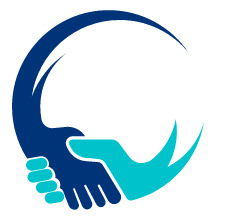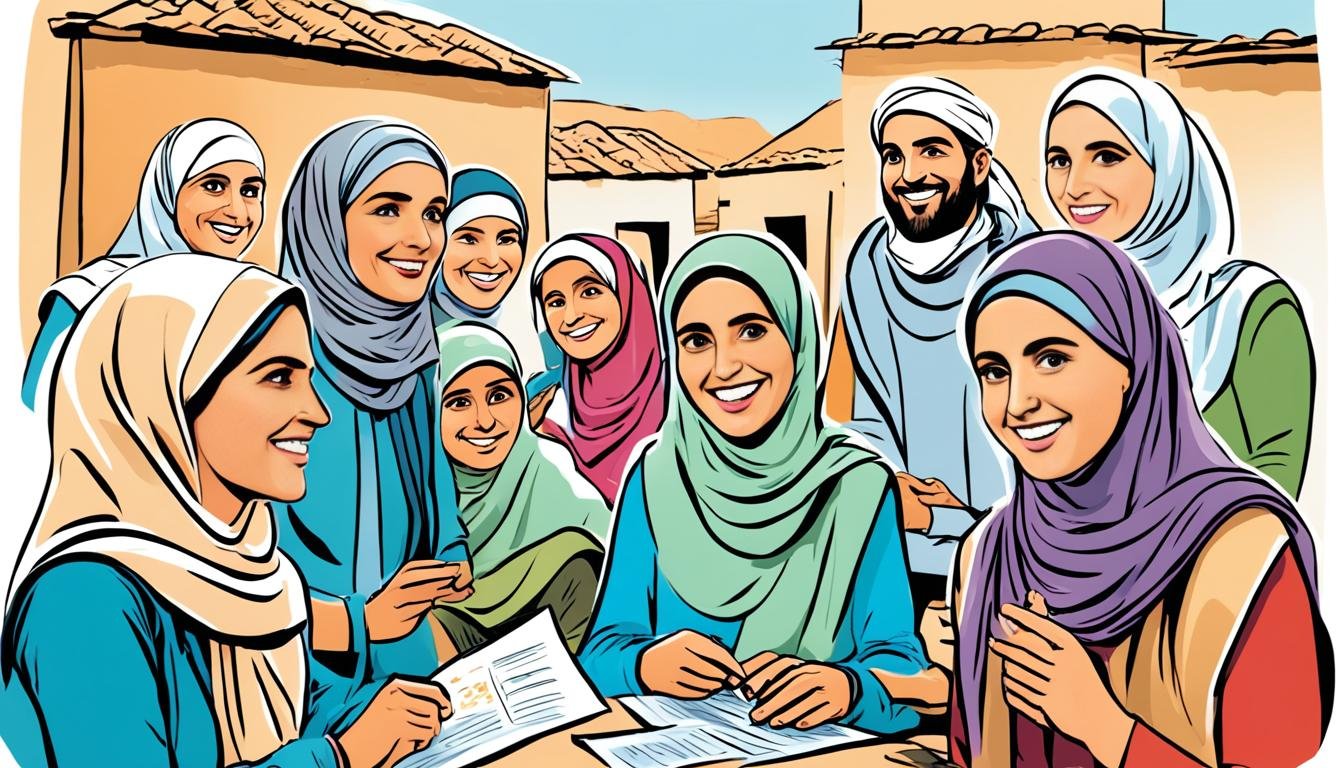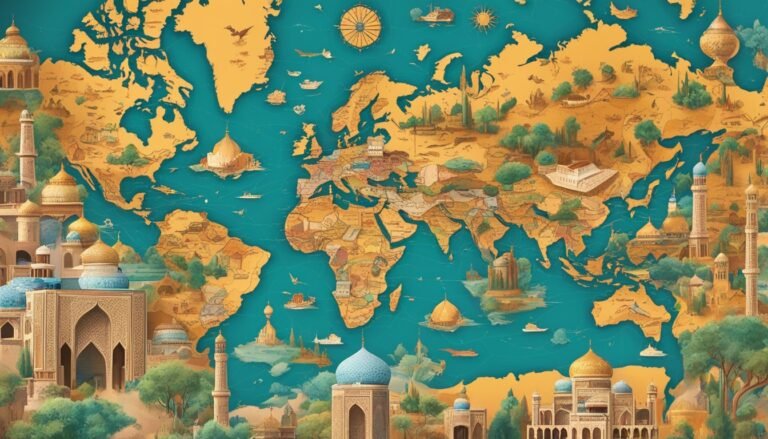Islamic Microfinance: Role in poverty alleviation and economic development
Imagine a world where financial services are accessible to everyone, regardless of their background. How would that change the landscape of poverty alleviation and economic development? Islamic microfinance emerges as a powerful tool in this transformative vision, specifically aimed at addressing the financial needs of marginalized communities while adhering to Sharia principles. This article delves into the pivotal role that Islamic microfinance plays in promoting financial inclusion, alleviating poverty, and fostering sustainable economic development.
With around 2.7 billion people in developing nations lacking access to financial services, the urgency of effective solutions has never been more critical. The findings from recent studies highlight the common perceptions of poverty, such as inadequate necessities and unemployment, underscoring the necessity for innovative financial approaches like Islamic microfinance.
Introduction to Islamic Microfinance
Islamic microfinance offers a unique approach to financial services, rooted in the principles of Sharia-compliant finance. Its emergence as an alternative to conventional banking systems has provided a viable pathway for millions who have been excluded from traditional financial services. The foundation of Islamic banking prohibits interest (riba), thereby aligning financial practices with Islamic teachings.
During the 1990s, around 47% of poor individuals lived below the poverty line in developing nations, but by 2010, this figure fell to 22% (United Nations, 2013). This substantial reduction highlights the importance of inclusive financial solutions, such as Islamic microfinance, which directly target underserved communities. In Pakistan, for instance, approximately 35% of the population lives below the poverty line, with 40% of children malnourished due to economic hardships.
With approximately 1,400 microfinance institutions (MFIs) worldwide in 2011, serving 94 million people, Islamic financial services are gaining traction. Reports indicate that 72% of Muslims in majority countries avoid conventional banking products, while an overwhelming 80% express a preference for interest-free alternatives. ADB studies reveal that 20-40% of respondents in several countries prefer Islamic microfinance, showcasing the growing awareness and acceptance of these ethical finance practices.
The rise of Islamic microfinance institutions has been significant, with a reported fourfold increase in clients since 2006, now totaling an estimated 1.3 million worldwide (CGAP, 2013). This growth is driven by the desire for financial solutions that adhere to religious values. Islamic microfinance not only promotes financial inclusion but contributes to welfare improvement, small enterprise development, and increased income levels, further anchoring its role in poverty alleviation.
The Concept of Poverty Alleviation
Poverty reduction remains a significant challenge in developing nations, where metrics for defining poverty encompass income levels, access to education, healthcare, and basic living conditions. Understanding these complexities allows for better strategies in poverty alleviation efforts.
Defining Poverty in the Context of Developing Nations
The definition of poverty varies, yet it is commonly measured through established standards. The World Bank classifies individuals living on less than US$1.25 per day as experiencing extreme poverty. Meanwhile, moderate poverty encompasses those living on less than US$2 or US$5 daily. A significant portion of the global population, particularly in developing countries, finds themselves in these classifications, highlighting the urgent need for effective solutions.
Indicators of Poverty Alleviation
Indicators of poverty reduction include improved income levels and enhanced access to education and healthcare. Studies suggest a strong correlation between these factors and successful poverty alleviation strategies. In the context of Islamic microfinance, efforts focus not just on financial services but also on empowering individuals, allowing them access to resources that can uplift their living conditions. This multifaceted approach fosters the potential for meaningful change in communities greatly affected by poverty.
Understanding Economic Development
Economic development serves as a cornerstone for the enhancement and growth of societies, particularly in impoverished areas. Financial inclusion stands out as a critical factor in this progress. By providing access to financial resources, individuals can engage in entrepreneurial activities, enabling them to rise above poverty. Islamic microfinance has emerged as an effective means to achieve financial inclusion, particularly in regions where conventional services fall short. It offers a unique approach, financing individuals without requiring collateral, thus empowering those in need.
The Role of Financial Inclusion in Economic Progress
Financial inclusion opens doors for millions of people, allowing them to access credit, savings, and insurance. For instance, approximately 65 million individuals across the globe have benefited from small loans through microfinance initiatives. These programs have given them the ability to build assets and invest in their futures. Islamic microfinance, in particular, aligns with the needs of the marginalized by operating under Sharia-compliant principles. This facilitates business ventures, leading to increased economic stability and growth.
Impact of Poverty on Economic Growth
Poverty exerts a detrimental impact on economic growth, creating a cycle that can be challenging to break. In countries like Bangladesh, poverty has historically hindered development efforts. Research indicates that areas stricken by poverty often experience economic stagnation, which, in turn, limits national progress. Addressing poverty through initiatives like Islamic microfinance not only assists individuals in enhancing their living conditions but also fosters broader economic development. By promoting financial inclusion, these efforts ultimately contribute to stimulating local economies and enhancing household incomes.
Islamic Microfinance: Role in Poverty Alleviation and Economic Development
Islamic Microfinance plays a crucial role in facilitating poverty reduction and enhancing economic empowerment. By providing interest-free loans, it supports marginalized populations in developing nations. This financing model encourages entrepreneurship and community development, addressing various poverty indicators like unemployment and insufficient financial resources.
Initial research shows that individuals involved in Islamic microfinance often witness significant improvements in their income levels. For example, a study revealed that borrowers experience a substantial increase in monthly income, averaging BDTK 2,040.00. This boost reflects a remarkable 49% increase, underscoring the impact of Islamic microfinance on economic empowerment.
Furthermore, data from Bangladesh illustrates the effectiveness of Islamic microfinance programs. From 2008 to 2013, the number of investment clients surged from 321,848 to 584,000, showing a growing acceptance of these financial services. The positive relationship between Islamic microfinance and education illustrates that these loans also enhance educational opportunities for children, with schooling rates for girls increasing by 29% and for boys by 31%.
Despite the potential of Islamic microfinance, awareness among potential beneficiaries remains limited. Many people express familiarity with conventional microfinance but exhibit skepticism toward interest-based systems. This gap highlights an opportunity for financial institutions to promote Islamic microfinance more effectively, aligning their services with the needs and beliefs of underprivileged communities.
As Islamic microfinance continues to evolve, its contribution to sustainable economic development cannot be overlooked. Through targeted support, it helps shape self-sufficient communities while tackling the complexities of poverty.
Principles of Sharia-Compliant Finance
The foundation of Islamic microfinance lies in the principles of Sharia-compliant finance. This approach seeks to create a financial system that respects the ethical dimensions outlined in Islamic teachings. Central to this framework is the prohibition of riba, a practice that exploits borrowers through excessive interest charges. By adhering to this principle, Islamic financial institutions foster a more equitable economic environment aimed at community upliftment.
Prohibition of Riba (Usury)
The prohibition of riba serves as a critical barrier against exploitative lending practices. Traditional interest-based loans often trap borrowers in cycles of debt, compromising their economic stability. Islamic microfinance provides an alternative by avoiding such practices, focusing instead on risk-sharing and profit-sharing models. This transformation allows individuals to engage in financial activities without the burdens associated with high-interest rates, thereby encouraging social justice and economic growth.
Focus on Ethical Investment Practices
Ethical investment is a cornerstone of Sharia-compliant finance. By emphasizing investments that are socially responsible and environmentally sustainable, Islamic microfinance aims to create a balance between financial returns and community welfare. Institutions prioritize ventures that benefit society, such as education, healthcare, and infrastructure projects. This approach not only supports the economic empowerment of individuals but also aligns practices with moral values, fostering a sense of solidarity among community members.
Case Studies: Success Stories from Indonesia
Indonesia serves as a compelling example of how Islamic Microfinance can drive positive change. Through various case studies, clear evidence shows the significant impacts on income levels, education, and healthcare access for borrowers. Understanding these local success stories offers valuable lessons in economic development.
Microfinance Impact on Income Levels
Microfinance institutions in Indonesia have facilitated 47 million deposit accounts and 32 million loan accounts, highlighting the substantial outreach of these financial services. A notable player in this sector, BRI Units, holds 80% of total microsavings balances and 54% of outstanding microloans. As a result, many families have experienced noticeable improvements in their economic conditions, raising their income levels and reducing poverty rates.
Education and Healthcare Access
Research indicates a correlation between access to Islamic Microfinance and enhanced educational opportunities for children. Communities benefiting from microfinance programs have reported healthier family dynamics and improved healthcare access. Ultimately, this financial inclusion leads to better outcomes for individuals and families, contributing to overall community well-being.
Islamic Microfinance Institutions and Services
Islamic Microfinance Institutions play a vital role in providing tailored financial services that cater to the needs of low-income populations. These institutions focus on empowering individuals through financial inclusion, aligning with Sharia-compliant principles to promote ethical and sustainable practices. Understanding the types of financial services offered unveils the extensive impact these institutions have on poverty alleviation and community development.
Types of Financial Services Offered
Islamic Microfinance Institutions provide a variety of essential financial services, including:
- Microcredit: Small loans offered without collateral, enabling individuals to start or expand their businesses.
- Micro-savings: Flexible savings accounts designed for low-income earners to accumulate funds for emergencies or future investments.
- Insurance products: Tailored solutions that provide financial protection against unforeseen events, supporting families and businesses.
These services are crucial as they address the gaps left by conventional financial institutions, particularly in regions where 67-80% of Muslims have minimal or no access to formal banking services.
The Role of Baitul Mal Wat Tamwil (BMT)
Baitul Mal Wat Tamwil (BMT) serves as an essential mechanism within the Islamic microfinance sector, promoting financial inclusion for marginalized communities. It functions by:
- Providing Sharia-compliant financing options that align with the ethical standards of the communities served.
- Facilitating access to financial services for individuals who have been traditionally excluded from the banking system.
- Enhancing economic development by creating sustainable livelihoods through support for micro-entrepreneurs.
As a growing presence in the microfinance landscape, BMTs contribute significantly to poverty alleviation efforts in countries like Indonesia, helping millions escape the cycle of poverty. This innovative approach to financial services ensures that the needs of low-income populations are met while staying true to Islamic finance principles.
Challenges Faced by Islamic Microfinance
Despite the transformative potential of Islamic microfinance, several challenges hinder its full growth and effectiveness. Regulatory frameworks and compliance issues play a significant role, often creating barriers that impede the establishment and expansion of Islamic financial institutions. Additionally, operational challenges in rural areas affect the overall outreach and impact of these initiatives.
Regulatory Framework and Compliance Issues
Islamic microfinance operates within a complex regulatory landscape that can complicate its growth. Many countries lack a clear understanding of the specific regulatory requirements necessary for Islamic finance. This uncertainty can result in delayed approvals and high compliance costs, ultimately affecting the ability of institutions to serve their target markets. Key regulatory issues include the need for alignment with Sharia principles, which can restrict operational flexibility.
Operational Challenges in Rural Areas
Operational challenges in rural areas significantly limit the effectiveness of Islamic microfinance, especially in the context of rural finance. Infrastructure deficiencies, including poor transportation and communication systems, hinder access to financial services. Many rural communities may also lack the necessary financial literacy to fully engage with microfinance options. As a result, institutions face difficulties in reaching potential clients, particularly in regions where poverty is prevalent.
The challenges of Islamic microfinance require innovative solutions that not only address regulatory hurdles but also enhance operational capacities in underdeveloped areas. Effective outreach and education will be critical in bridging the gap between formal financial services and underserved communities.
Comparative Analysis: Islamic vs. Conventional Microfinance
The landscape of microfinance offers various models that cater to the unique needs of borrowers. Understanding the distinctions between Islamic vs. conventional microfinance illuminates critical aspects such as interest rates and repayment mechanisms. Client perceptions play a significant role in shaping the choices made by borrowers in their quest for financial solutions.
Interest Rates and Repayment Mechanisms
In conventional microfinance, organizations like Grameen Bank operate with interest-based mechanisms, utilizing peer pressure as collateral. This model often leads to higher interest rates and poses challenges for borrowers in terms of repayment. On the other hand, Islamic microfinance institutions promote Sharia-compliant practices that prohibit interest, thereby creating a more ethical financial structure. Rather than imposing interest, they focus on profit-sharing and risk-sharing agreements, which can enhance borrower satisfaction and foster a sense of community among members.
Client Perceptions and Acceptance
Client perceptions significantly impact the acceptance rate of various microfinance models. Muslim borrowers frequently show a strong preference for Islamic microfinance solutions, desiring Sharia-compliant options to avoid interest-based loans. Research indicates that borrowers feel more satisfied with Islamic microfinance due to the ethical considerations and improved service delivery that align with their values. This preference is rooted in an understanding of the socio-economic benefits provided by these institutions, as they often focus on inclusive practices that emphasize empathy and community growth.
The Future of Islamic Microfinance
The landscape of Islamic microfinance is poised for transformation through innovations and technological integration. As practitioners embrace new tools, the future of Islamic microfinance appears promising, focusing on effective service delivery and expanded outreach. This shift heralds a new chapter where financial inclusion becomes more achievable for underserved populations, ultimately impacting poverty alleviation.
Innovations and Technological Integration
Technological advancements play a crucial role in streamlining operations within Islamic microfinance institutions. These innovations can include mobile banking solutions and digital platforms that expedite loan applications and fund disbursement. Such technological integration enhances clients’ experience while promoting transparency and accountability. The significance of these changes cannot be overstated, as they support the core mission of Islamic microfinance—to uplift communities and provide the resources needed for sustainable development.
Potential for Sustainable Development
As Islamic microfinance continues to evolve, its potential for sustainable development becomes increasingly clear. Not only does it foster economic empowerment among poverty-stricken individuals, but it encourages responsible investment aligned with Islamic values. A study highlighting the remarkable rise in beneficiaries—from 577,740 in 2008 to 897,000 in 2013—illustrates how such initiatives contribute to long-term social and economic progress. By focusing on ethical investment and financial education, Islamic microfinance aims to break the cycle of poverty while promoting a more equitable society.
Conclusion
Islamic microfinance emerges as a powerful tool in the ongoing battle against poverty, playing a crucial role in economic development, particularly in marginalized communities. By adhering to the principles of risk-sharing and social justice, this approach helps individuals access the financial resources they need to start or expand their businesses, thereby improving living standards and fostering community resilience.
The success of Islamic microfinance in promoting poverty alleviation hinges on its commitment to sustainable development. By offering financial products such as micro-equity investments, it encourages economically and socially responsible ventures, which are vital for long-term growth. Moreover, effective program design and robust appraisal processes enhance the sustainability of these initiatives, ensuring that they continue to address the needs of the poor while empowering them towards self-sufficiency.
As the global poverty challenge persists, continued support and expansion of Islamic microfinance practices become essential. By fostering financial inclusion and supporting grassroots entrepreneurship, Islamic microfinance not only contributes to economic development but also strengthens social fabric, paving the way for a more equitable and prosperous future.
Source Links
- The Role of Islamic Microfinance in Poverty Alleviation: Evi
- Islamic Microfinance and Poverty Alleviation: An Empirical Ascertainment from Pakistan
- Microsoft Word – BM2109-033 DONE
- Islamic Microfinance: Solution to Poverty Alleviation?
- The Effect of Islamic Microfinance on Poverty Alleviation: Study in Indonesia
- The Role of Islamic Microfinance for Poverty Alleviation in Mogadishu, Somalia: An Exploratory Study | Xalane
- A review on literature of Islamic microfinance from 2010-2020: lesson for practitioners and future directions
- Economic Empowerment and Poverty Alleviation through Islamic Microfinance: A Sustainable Approach
- Education and microfinance: an alternative approach to the empowerment of the poor people in Indonesia
- Microsoft Word – Final – Jurnal Zeqi templated CLEAR
- Article
- Does Islamic microfinance contribute to economic empowerment in Tunisia?: a case study of Zitouna Tamkeen







